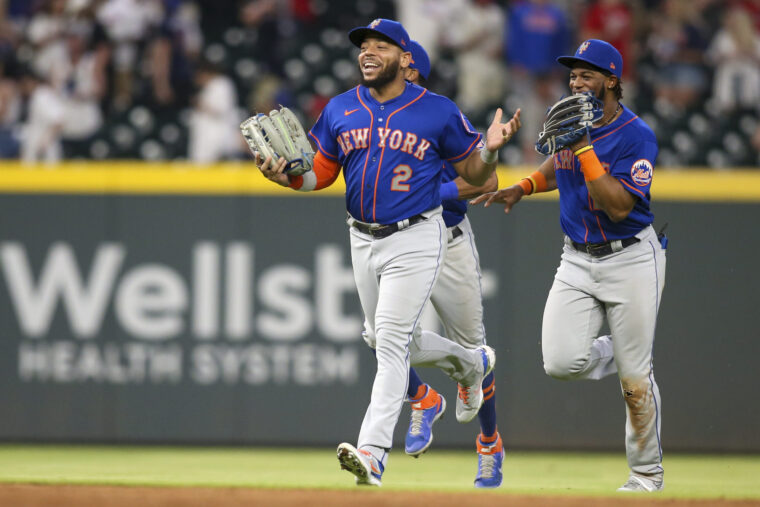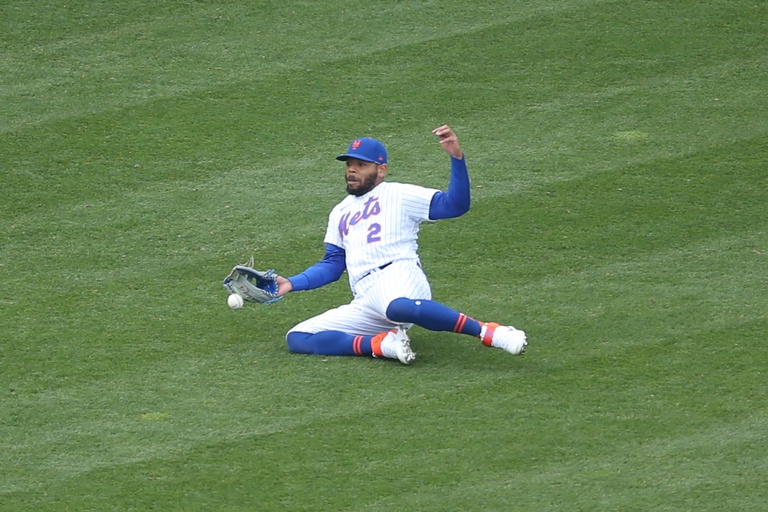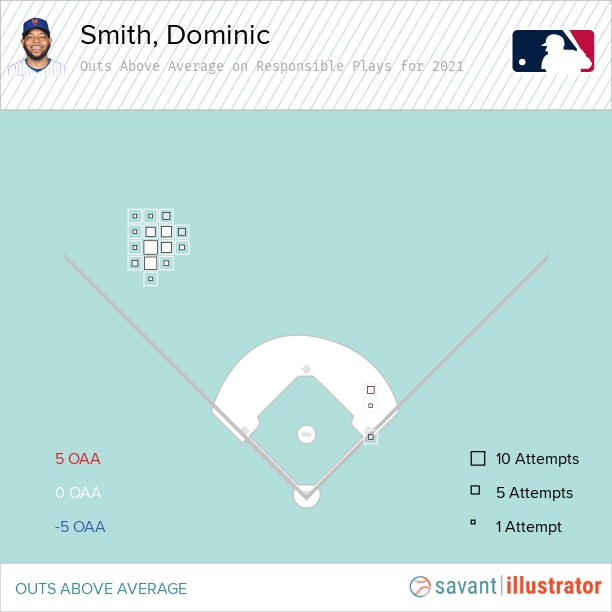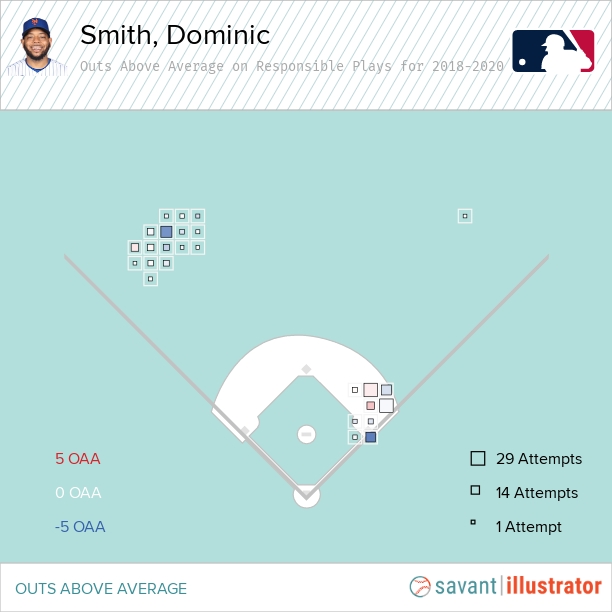
Credit: Brett Davis-USA TODAY Sports
After being considered one of the worst defending teams across the major leagues last season, the New York Mets were determined to put those woes behind them and were looking to take a positive step forward this season, particularly in the outfield.
Looking to make a big splash in free agency last offseason, the front office targeted outfielder George Springer and were hopeful he could help fill the massive void in center field, unfortunately, their pursuit came up short as the three-time All-Star signed with the Toronto Blue Jays. As a result, management was forced to shift gears and ultimately acquired a pair of depth outfielders in Kevin Pillar and Albert Almora Jr.
Since the Mets failed to land an everyday center fielder this past winter, they weren’t able to move outfielder Brandon Nimmo, who posted a career-worst -4 OAA in center field last season, to left field this spring and have been forced to keep him in the middle of the field. While there was some optimism the universal designated hitter would return for a second straight campaign, putting that in place has been delayed until next season, causing veteran Dominic Smith to roam in left field once again.
Thanks to the universal DH spot, Smith was able to spend significantly more time in the infield during the 56-game shortened schedule, as he compiled 193.0 innings at first base. As for this season, the 25-year-old has only spent 31 2/3 innings on the right side of the infield and has primarily been positioned in left field, which is an area where his defense has been a major concern in the past.
Coming into the 2021 campaign, the former first-round pick had totaled 470 1/3 career innings in left field, generating a -9 OAA, -6 DRS, -3.4 RngR, -7.2 UZR and a -22.7 UZR/150.
Based on these concerning metrics, it would’ve made plenty of sense to have Smith split time between first base and the DH spot for a second consecutive season. But since that hasn’t been an option in 2021, the Mets’ coaching staff has since focused on helping him improve his defense and they’ve also been locating where in the outfield he’s best positioned.

Credit: Brad Penner-USA TODAY Sports
While the veteran outfielder is far from a finished product, he’s surprisingly made significant strides in the right direction and hasn’t become a liability in left field up to this point, which has certainly been a welcomed occurrence. After working tirelessly to improve his defense over the offseason and during this past spring, the left-hander is starting to see his hard work pay off through the first two months of the season, as he’s near the top of the leaderboard in multiple different defensive categories.
After playing just 23 games in left field last season, Smith has witnessed his workload climb to 42 games and has compiled 319 2/3 innings during that span, producing a 2 DRS, 0.8 RngR, 1.1 UZR and an 8.1 UZR/150 – all of which are career-highs.
Comparing these encouraging results to the rest of the majors, the former top prospect is currently tied for the fourth-most DRS, owns the fourth-highest UZR/150, is tied for the fifth-highest defensive WAR rating (-0.6) and has recorded the seventh-highest RngR and UZR among all left fielders who’ve earned at least 200.0 innings, according to FanGraphs.com.
Taking into account his previous defensive struggles, Smith and the Mets deserve a ton of credit for this remarkable year-to-year progression, especially since he’s gained so much ground in such a short period of time. In most cases, it usually requires an entire 162-game schedule, and sometimes even more time than that, before a player begins witnessing significant improvements regarding their defense.
So how has Smith found a way to perform more effectively in left field this season?
Well, a major component of his progression has been where the team has positioned him before the start of each play. Since the Junipero Serra HS standout has historically struggled with his range in the outfield, the coaching staff has decided to move him closer to the foul line, which has made it much easier for him to track down balls when ranging to his right.
Here are Smith’s starting points from this season:

Source: BaseballSavant.com
In comparison, here are Smith’s starting points from 2018-2020:

Source: BaseballSavant.com
Unlike previous seasons, Smith hasn’t been caught in “no man’s land” nearly as much in 2021 and also hasn’t needed to track down as many balls in the gap, allowing him to thrive in the left-field corner. In addition, this new positioning has also seemingly helped him perform more effectively on plays where he’s needed to range towards the infield, which is something he’s struggled with in the past.
But based on his -2 OAA, which is tied for fourth-worst among all qualified left fielders, it’s clear the California native still has some room to grow as the season progresses, particularly when ranging to his left. Having said that, there’s no question the Mets are extremely pleased with the work he’s already accomplished so far.
Since the current Collective Bargaining Agreement is set to expire this winter, all signs are pointing to the universal DH becoming a permanent part of the game moving forward, meaning this will likely be the final season Smith is required to serve as a full-time left fielder. Looking ahead to future seasons, the lefty slugger should be able to occupy first base regularly and could also occasionally rotate through the DH spot as well.
Even though Smith is far better suited to be positioned in the infield and is destined to make that transition in the future, positional flexibility has become an extremely valuable asset of this era, so his improved defense could entice the Mets to utilize him at multiple positions in 2022 and beyond.















